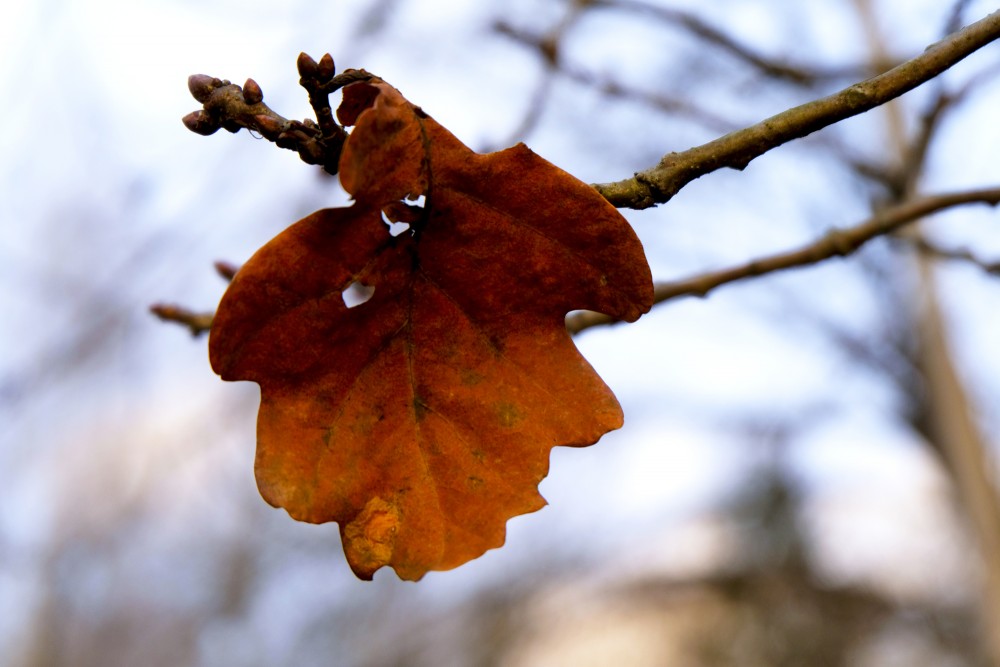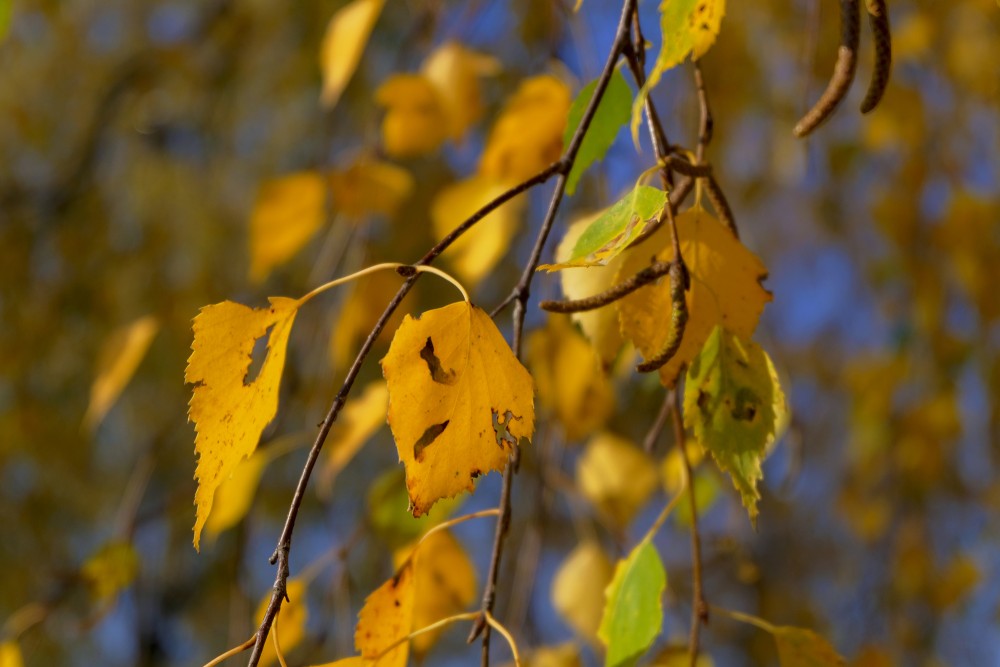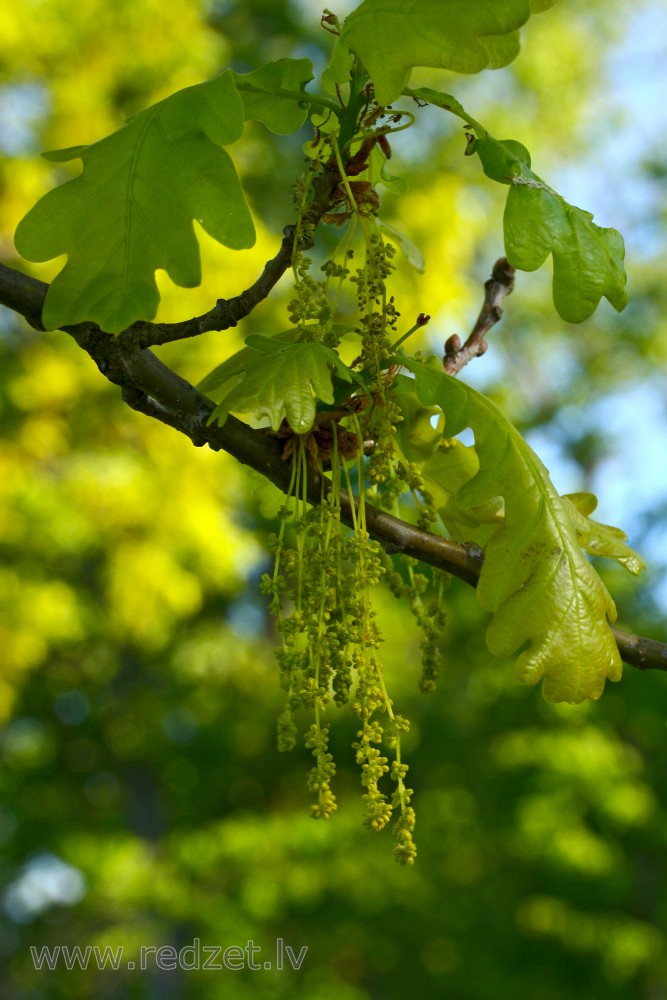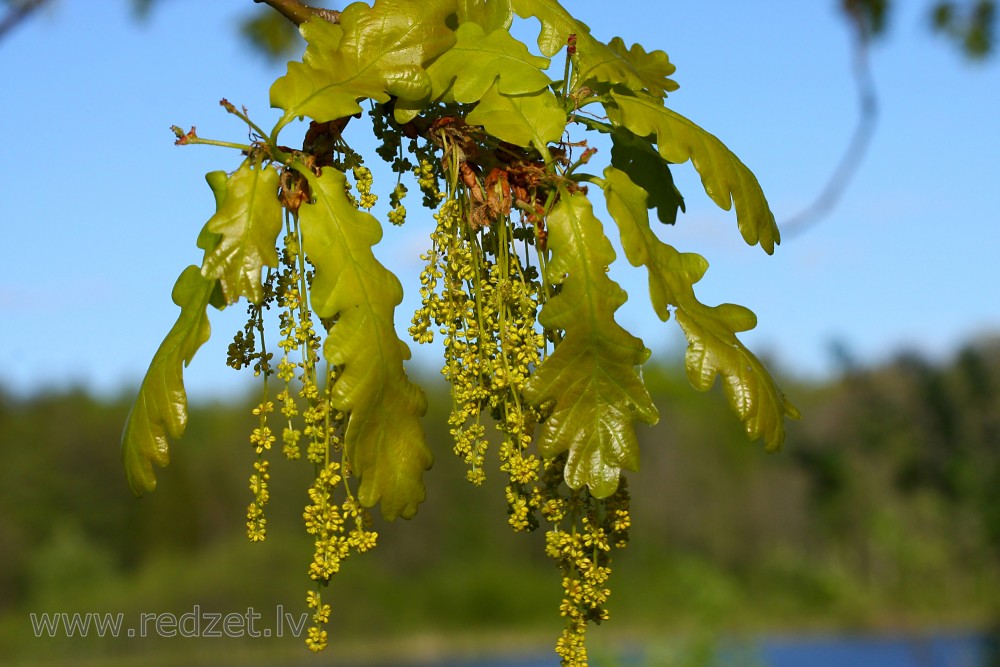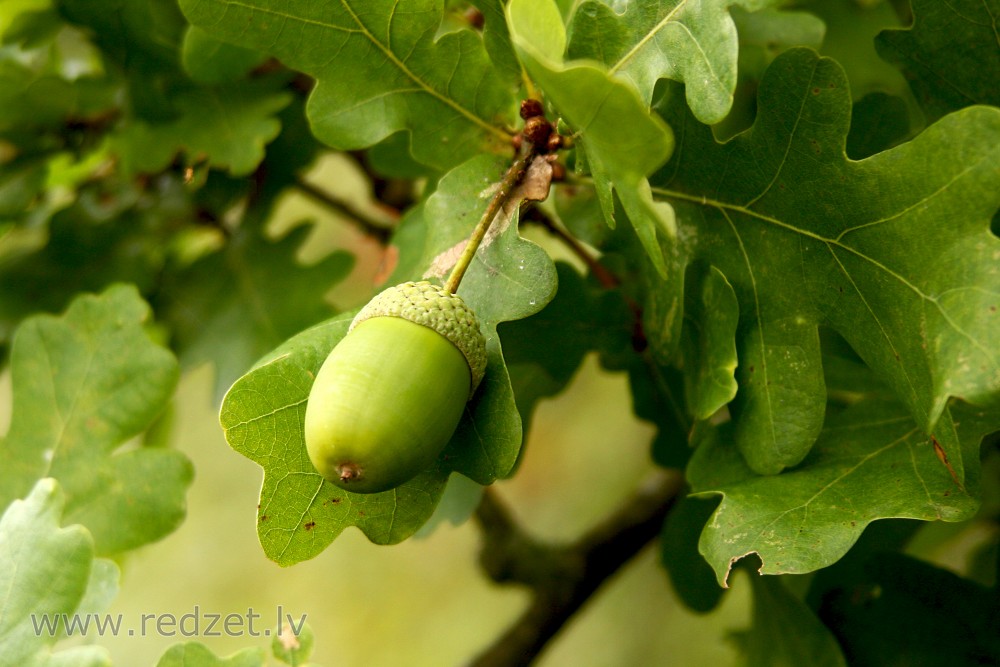Leaves
A leaf is an organ of a vascular plant and is the principal lateral appendage of the stem. The leaves and stem together form the shoot. Leaves are collectively referred to as foliage, as in "autumn foliage".
Although leaves can be seen in many different shapes, sizes and textures, typically a leaf is a thin, dorsiventrally flattened organ, borne above ground and specialized for photosynthesis. In most leaves, the primary photosynthetic tissue, the palisade mesophyll, is located on the upper side of the blade or lamina of the leaf but in some species, including the mature foliage of Eucalyptus, palisade mesophyll is present on both sides and the leaves are said to be isobilateral. Most leaves have distinctive upper surface (adaxial) and lower surface (abaxial) that differ in colour, hairiness, the number of stomata (pores that intake and output gases), epicuticular wax amount and structure and other features.
Broad, flat leaves with complex venation are known as megaphylls and the species that bear them, the majority, as broad-leaved or megaphyllous plants. In others, such as the clubmosses, with different evolutionary origins, the leaves are simple, with only a single vein and are known as microphylls.
Some leaves, such as bulb scales are not above ground. In many aquatic species the leaves are submerged in water. Succulent plants often have thick juicy leaves, but some leaves are without major photosynthetic function and may be dead at maturity, as in some cataphylls and spines. Furthermore, several kinds of leaf-like structures found in vascular plants are not totally homologous with them. Examples include flattened plant stems called phylloclades and cladodes, and flattened leaf stems called phyllodes which differ from leaves both in their structure and origin. Many structures of non-vascular plants, such as the phyllids of mosses and liverworts and even of some foliose lichens, which are not plants at all (in the sense of being members of the kingdom Plantae), look and function much like leaves.
General characteristics
Leaves are the most important organs of most vascular plants. Since plants are autotrophic, they do not need food from other living things to survive but instead use carbon dioxide, water and light energy, to create their own organic matter by photosynthesis of simple sugars, such as glucose and sucrose. These are then further processed by chemical synthesis into more complex organic molecules such as cellulose, the basic structural material in plant cell walls. The plant must therefore bring these three ingredients together in the leaf for photosynthesis to take place. The leaves draw water from the ground in the transpiration stream through a vascular conducting system known as xylem and obtain carbon dioxide from the atmosphere by diffusion through openings called stomata in the outer covering layer of the leaf (epidermis), while leaves are orientated to maximise their exposure to sunlight. Once sugar has been synthesized, it needs to be transported to areas of active growth such as the plant shoots and roots. Vascular plants transport sucrose in a special tissue called the phloem. The phloem and xylem are parallel to each other but the transport of materials is usually in opposite directions. Within the leaf these vascular systems branch (ramify) to form veins which supply as much as the leaf as possible, ensuring that cells carrying out photosynthesis are close to the transportation system.
Typically leaves are broad, flat and thin (dorsiventrally flattened), thereby maximising the surface area directly exposed to light and enabling the light to penetrate the tissues and reach the chloroplasts, thus promoting photosynthesis. They are arranged on the plant so as to expose their surfaces to light as efficiently as possible without shading each other, but there are many exceptions and complications. For instance plants adapted to windy conditions may have pendent leaves, such as in many willows and eucalyptss. The flat, or laminar, shape also maximises thermal contact with the surrounding air, promoting cooling. Functionally, in addition to photosynthesis the leaf is the principal site of transpiration and guttation.
Many gymnosperms have thin needle-like or scale-like leaves that can be advantageous in cold climates with frequent snow and frost. These are interpreted as reduced from megaphyllous leaves of their Devonian ancestors. Some leaf forms are adapted to modulate the amount of light they absorb to avoid or mitigate excessive heat, ultraviolet damage, or desiccation, or to sacrifice light-absorption efficiency in favour of protection from herbivory. For xerophytes the major constraint is not light flux or intensity, but drought. Some window plants such as Fenestraria species and some Haworthia species such as Haworthia tesselata and Haworthia truncata are examples of xerophytes. and Bulbine mesembryanthemoides.
Leaves also function to store chemical energy and water (especially in succulents) and may become specialised organs serving other functions, such as tendrils of peas and other legumes, the protective spines of cacti and the insect traps in carnivorous plants such as Nepenthes and Sarracenia. Leaves are the fundamental structural units from which cones are constructed in gymnosperms (each cone scale is a modified megaphyll leaf known as a sporophyll) and from which flowers are constructed in flowering plants.
The internal organisation of most kinds of leaves has evolved to maximise exposure of the photosynthetic organelles, the chloroplasts, to light and to increase the absorption of carbon dioxide while at the same time controlling water loss. Their surfaces are waterproofed by the plant cuticle and gas exchange between the mesophyll cells and the atmosphere is controlled by minute openings called stomata, about 10 μm which open or close to regulate the rate exchange of carbon dioxide, oxygen, and water vapour into and out of the internal intercellular space system. Stomatal opening is controlled by the turgor pressure in a pair of guard cells that surround the stomatal aperture. In any square centimeter of a plant leaf there may be from 1,000 to 100,000 stomata.
The shape and structure of leaves vary considerably from species to species of plant, depending largely on their adaptation to climate and available light, but also to other factors such as grazing animals (such as deer), available nutrients, and ecological competition from other plants. Considerable changes in leaf type occur within species too, for example as a plant matures; as a case in point Eucalyptus species commonly have isobilateral, pendent leaves when mature and dominating their neighbours; however, such trees tend to have erect or horizontal dorsiventral leaves as seedlings, when their growth is limited by the available light.[16] Other factors include the need to balance water loss at high temperature and low humidity against the need to absorb atmospheric carbon dioxide. In most plants leaves also are the primary organs responsible for transpiration and guttation (beads of fluid forming at leaf margins).
Leaves can also store food and water, and are modified accordingly to meet these functions, for example in the leaves of succulent plants and in bulb scales. The concentration of photosynthetic structures in leaves requires that they be richer in protein, minerals, and sugars than, say, woody stem tissues. Accordingly, leaves are prominent in the diet of many animals.
Correspondingly, leaves represent heavy investment on the part of the plants bearing them, and their retention or disposition are the subject of elaborate strategies for dealing with pest pressures, seasonal conditions, and protective measures such as the growth of thorns and the production of phytoliths, lignins, tannins and poisons.
Deciduous plants in frigid or cold temperate regions typically shed their leaves in autumn, whereas in areas with a severe dry season, some plants may shed their leaves until the dry season ends. In either case the shed leaves may be expected to contribute their retained nutrients to the soil where they fall.
In contrast, many other non-seasonal plants, such as palms and conifers, retain their leaves for long periods; Welwitschia retains its two main leaves throughout a lifetime that may exceed a thousand years.
The leaf-like organs of Bryophytes (e.g., mosses and liverworts), known as phyllids, differ morphologically from the leaves of vascular plants in that they lack vascular tissue, are usually only a single cell thick and have no cuticle stomata or internal system of intercellular spaces.
Simple, vascularised leaves (microphylls) first evolved as enations, extensions of the stem, in clubmosses such as Baragwanathia during the Silurian period. True leaves or euphylls of larger size and with more complex venation did not become widespread in other groups until the Devonian period, by which time the carbon dioxide concentration in the atmosphere had dropped significantly. This occurred independently in several separate lineages of vascular plants, in progymnosperms like Archaeopteris, in Sphenopsida, ferns and later in the gymnosperms and angiosperms. Euphylls are also referred to as macrophylls or megaphylls (large leaves).
Morphology (large-scale features)
A structurally complete leaf of an angiosperm consists of a petiole (leaf stalk), a lamina (leaf blade), and stipules (small structures located to either side of the base of the petiole). Not every species produces leaves with all of these structural components. Stipules may be conspicuous (e.g. beans and roses, soon falling or otherwise not obvious as in Moraceae or absent altogether as in the Magnoliaceae. A petiole may be absent, or the blade may not be laminar (flattened). The tremendous variety shown in leaf structure (anatomy) from species to species is presented in detail below under morphology. The petiole mechanically links the leaf to the plant and provides the route for transfer of water and sugars to and from the leaf. The lamina is typically the location of the majority of photosynthesis. The upper (adaxial) angle between a leaf and a stem is known as the axil of the leaf. It is often the location of a bud. Structures located there are called "axillary".
External leaf characteristics, such as shape, margin, hairs, the petiole, and the presence of stipules and glands, are frequently important for identifying plants to family, genus or species levels, and botanists have developed a rich terminology for describing leaf characteristics. Leaves almost always have determinate growth. They grow to a specific pattern and shape and then stop. Other plant parts like stems or roots have non-determinate growth, and will usually continue to grow as long as they have the resources to do so.
The type of leaf is usually characteristic of a species (monomorphic), although some species produce more than one type of leaf (dimorphic or polymorphic). The longest leaves are those of the Raffia palm, R. regalis which may be up to 25 m (82 ft) long and 3 m (9.8 ft) wide. The terminology associated with the description of leaf morphology is presented, in illustrated form, at Wikibooks.
Where leaves are basal, and lie on the ground, they are referred to as prostrate.
en.wikipedia.org
